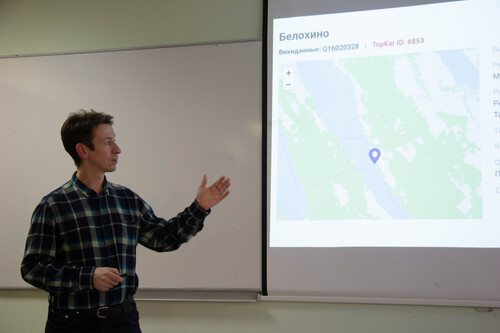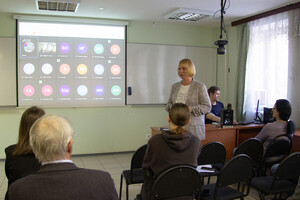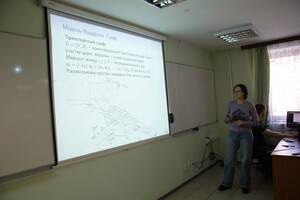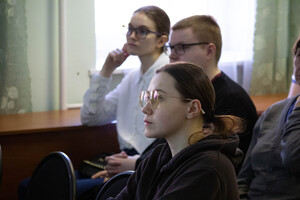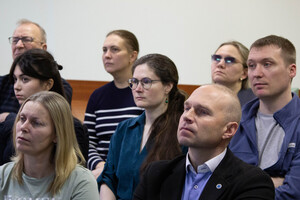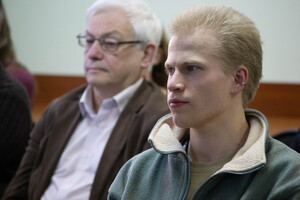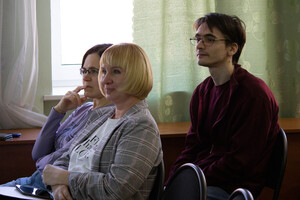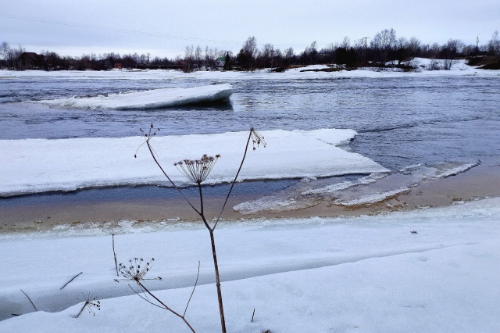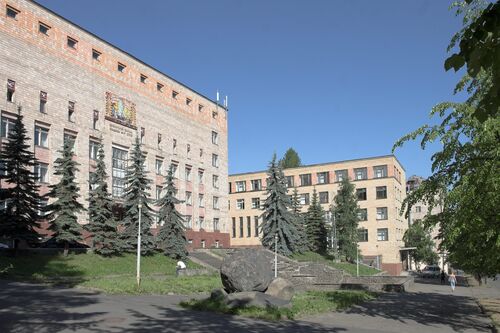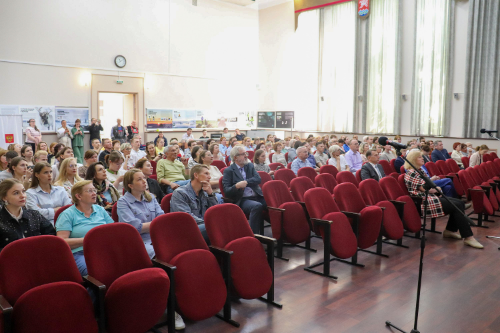— The idea of having an inter-institute workshop came up when discussing the results of the institute’s activities in 2024 at the Learned Council session. We decided to adopt a fairly broad thematic scope for the planned workshops, including mathematical modeling as a basis for interdisciplinary research, as well as advanced ways of data processing, in particular with the use of AI, — shared Anna Rettieva, Director of IAMR KarRC RAS.
Alexander Rumyantsev, Head of the Laboratory for Stochastic Modeling of Data Computing and Telecommunication Systems, IAMR KarRC RAS, told about the work of supercomputers, about the background and the tasks of the computing cluster based on KarRC RAS Core Facility “High Performance Data Processing Center”.
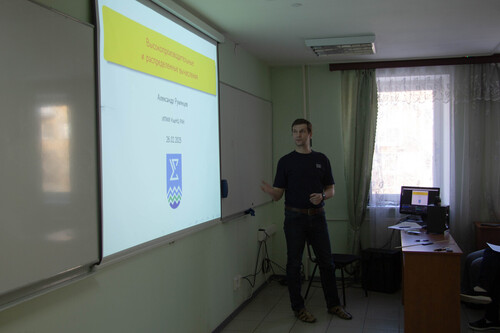
Presentation by Alexander Rumyantsev, Head of the Laboratory for Stochastic Modeling of Data Computing and Telecommunication Systems, IAMR KarRC RAS
— In spite of its rather modest technical characteristics, the cluster is widely used both by the staff of our institute and by colleagues from other scientific units of KarRC RAS. Over the past 15 years, the equipment has been used to handle a wide range of tasks, including quantum chemical calculations, computational fluid dynamics, hydrogen permeability models, discrete mathematics calculations, and simulation modeling. Currently, computations in the field of bioinformatics, geology, modeling of water bodies are being carried out jointly with other institutes, — explained Alexander Rumyantsev.
An example of efficient collaboration is joint studies by mathematicians and staff of the Northern Water Problems Institute KarRC RAS. Ilya Chernov, Senior Researcher of the Laboratory for Modeling Natural and Technical Systems IAMR KarRC RAS, spoke about the work on sea dynamics simulation. A numerical model of water, ice, and the ecosystem has been developed for the White Sea – a water body of great importance for Karelia. This model enables the examination of various scenarios of the ice regime transformation under climate change.
Also, mathematicians and hydrologists are contributing to the development of a system for modeling and predicting the climate in the Arctic in cooperation with the Voeikov Main Geophysical Observatory and a biogeochemical model of the World Ocean together with the Marchuk Institute of Numerical Mathematics. The models simulate physical and biogeochemical processes, take into account their long-term dynamics and help predict the climate change and its consequences.
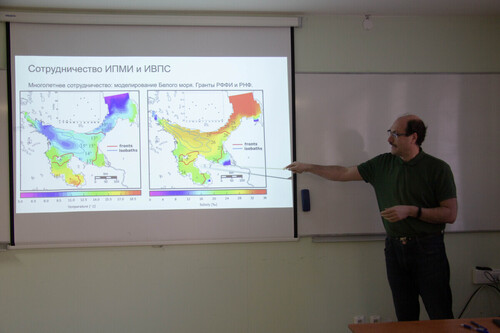
Joint studies of Karelian mathematicians and staff of the Northern Water Problems Institute KarRC RAS presented by Ilya Chernov, Senior Researcher of the Laboratory for Modeling Natural and Technical Systems IAMR KarRC RAS
Andrey Krizhanovsky, Head of the Laboratory of Information and Computer Technology, IAMR KarRC RAS, told about the tools enabling place name recognition in the TopKar system. The TopKar website now contains about 56,000 place names, of which some 50,000 are supplied with textual descriptions. Many of the settlements and natural objects in TopKar are no longer or have never been found on modern maps. Material for the database was collected through meticulous long-term work of scientists of the Institute of Linguistics, Literature and History KarRC RAS.
A total of 5 talks were delivered at the workshop. Other examples covered by the speakers were the use of game theoretic methods in the analysis of Petrozavodsk transportation systems, the application of mathematical methods for dealing with molecular biology tasks, in particular, the selection of effective drugs. An upcoming workshop on the possibilities of using AI in scientific research was announced.
Director General of KarRC RAS Olga Bakhmet took part in the discussion. The Center's leader wished the scientists to find new avenues for interdisciplinary research.
- We learned here today about very interesting methods of doing joint scientific research, and staff of the Institute of Applied Mathematical Research have demonstrated their willingness and interest in new collaborations with scientists from other units, - noted Olga Bakhmet.
During the discussion, Alexander Slabunov, Head of the Laboratory of Precambrian Geology and Geodynamics, Institute of Geology KarRC RAS, emphasized the importance of mathematics as a science that links all spheres of knowledge.
— Math is a way to verify our data and use it more confidently. If we can describe a phenomenon with math, it means we understand it. Today's meeting was very important, but it is especially important to continue such events. The planned workshop on artificial intelligence will be even more topical, as new technologies will provide high-quality solutions to new interesting tasks and help gain government support for their implementation, — said the scientist.
Natalia Galibina, Principal Researcher at the Laboratory of Woody Plant Physiology and Cytology, Forest Research Institute KarRC RAS, commented on the possible use of numerical simulation tools for predicting plant cell development scenarios.
- Biochemists, molecular biologists and bioinformaticians have amassed a great deal of material with which we could move on to mathematical modeling tasks. We are ready to formulate tasks for building models of cambial cells, from which plant tissues are then formed, - the biologist noted.
Wrapping up the workshop, Anna Rettieva outlined plans for the future: the next meetings with mathematicians will be devoted to building mathematical models in various fields of science. Such events will be especially useful for young scientists.




